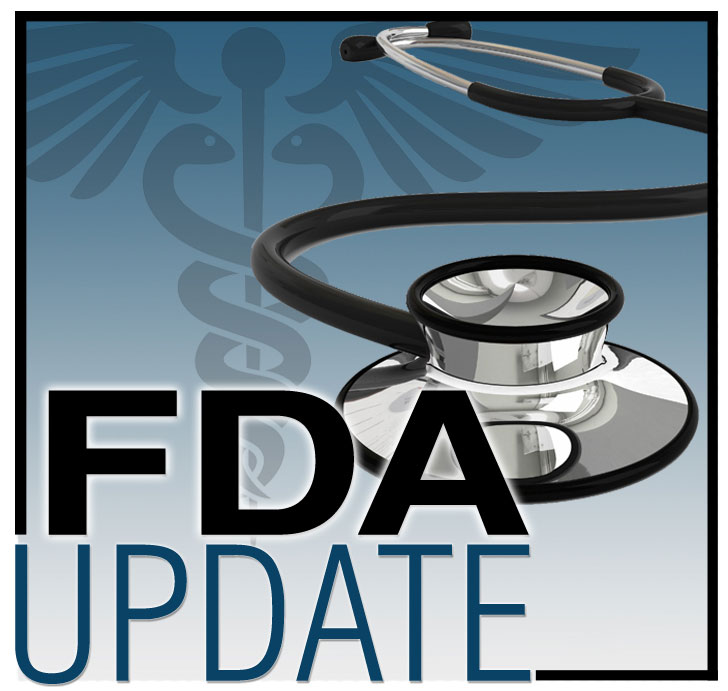- U.S. Food and Drug Administration (FDA) (https://voice.ons.org/topic/us-food-and-drug-administration-fda)
- Oncology Drug Research (https://voice.ons.org/topic/oncology-drug-research)
- Drug Reference Sheets (https://voice.ons.org/topic/drug-reference-sheets)
- Clinical Practice (https://voice.ons.org/topic/clinical-practice)
FDA Grants Regular Approval to Enfortumab Vedotin-Ejfv for Locally Advanced or Metastatic Urothelial Cancer
On July 9, 2021, the U.S. Food and Drug Administration (FDA) approved (https://www.fda.gov/drugs/drug-approvals-and-databases/fda-grants-regular-approval-enfortumab-vedotin-ejfv-locally-advanced-or-metastatic-urothelial-cancer?utm_medium=email&utm_source=govdelivery) enfortumab vedotin-ejfv ([EV], Padcev®), a Nectin-4–directed antibody and microtubule inhibitor conjugate, for adult patients with locally advanced or metastatic urothelial cancer who previously received a programmed death receptor-1 (PD-1) or programmed death-ligand (PD-L1) inhibitor and platinum-containing chemotherapy or are ineligible for cisplatin-containing chemotherapy and have previously received one or more prior lines of therapy.

FDA granted accelerated approval in December 2019 to EV for patients with locally advanced or metastatic urothelial cancer who received a PD-1 or PD-L1 inhibitor and a platinum-containing chemotherapy in the neoadjuvant, adjuvant, locally advanced or metastatic setting.
An open-label, randomized, multicenter trial (EV-301, NCT03474107) was required to confirm the clinical benefit of the 2019 accelerated approval. Researchers enrolled 608 patients with locally advanced or metastatic urothelial cancer who received a prior PD-1 or PD-L1 inhibitor and platinum-based chemotherapy. Patients were randomized (1:1) to receive either EV 1.25 mg/kg on days 1, 8, and 15 of a 28-day cycle or investigator’s choice of single-agent chemotherapy (docetaxel, paclitaxel, or vinflunine).
The primary efficacy endpoint was overall survival (OS) with key secondary efficacy endpoints of progression-free survival (PFS), and overall response rate (ORR) assessed by investigator using response evaluation criteria in solid tumors 1.1. Median OS was 12.9 months (95% CI = 10.6, 15.2) for patients on the EV arm (n = 301) versus 9.0 months for those receiving chemotherapy (n = 307) (95% CI = 8.1, 10.7) (HR 0.70; 95% CI = 0.56, 0.89; p = 0.0014). Median PFS was 5.6 months (95% CI = 5.3, 5.8) compared with 3.7 months (95% CI = 3.5, 3.9), respectively (HR 0.62; 95% CI = 0.51, 0.75; p < 0.0001). The ORR was 40.6% (95% CI = 34.9, 46.5) versus 17.9% (95% CI = 13.7, 22.8), respectively (p < 0.0001).
Efficacy for patients ineligible for cisplatin-containing chemotherapy was evaluated in a single-arm, multicohort, international trial (cohort 2 of EV-201, NCT03219333) in 89 patients with locally advanced or metastatic urothelial cancer who received a prior PD-1 or PD-L1 inhibitor and were ineligible for cisplatin-containing chemotherapy. The primary efficacy endpoint was confirmed ORR, assessed by blinded independent central review, and the key secondary efficacy endpoint was response duration. The confirmed ORR was 51% (95% CI = 39.8, 61.3), including 22% with complete responses, and the median response duration was 13.8 months (95% CI = 6.4, not estimable).
The most common adverse reactions, including laboratory abnormalities (≥ 20%), were rash, increased aspartate aminotransferase, increased glucose, increased creatinine, fatigue, peripheral neuropathy, decreased lymphocytes, alopecia, decreased appetite, decreased hemoglobin, diarrhea, decreased sodium, nausea, pruritus, decreased phosphate, dysgeusia, increased alanine aminotransferase, anemia, decreased albumin, decreased neutrophils, increased urate, increased lipase, decreased platelets, decreased weight, and dry skin.
A boxed warning for serious skin reactions, including Stevens-Johnson syndrome and toxic epidermal necrolysis, and a warning for pneumonitis were added to the U.S. prescribing information.
The recommended dose of EV is 1.25 mg/kg (up to a maximum dose of 125 mg) administered as an IV infusion over 30 minutes on days 1, 8, and 15 of a 28-day cycle until disease progression or unacceptable toxicity.
The review was conducted under Project Orbis (https://www.fda.gov/about-fda/oncology-center-excellence/project-orbis), an initiative of FDA’s Oncology Center of Excellence. Project Orbis provides a framework for concurrent submission and review of oncology drugs among international partners. FDA collaborated with Health Canada and Australia’s Therapeutic Goods Administration for the review.
The review used the Real-Time Oncology Review (https://www.fda.gov/about-fda/oncology-center-excellence/real-time-oncology-review) pilot program, which streamlined data submission prior to the filing of the entire clinical application, and Assessment Aid (https://www.fda.gov/about-fda/oncology-center-excellence/assessment-aid), a voluntary submission from the applicant to facilitate FDA’s assessment. FDA approved the application approximately five weeks ahead of the goal date.
The application was granted priority review and breakthrough therapy designation. A description of FDA expedited programs is in the Guidance for Industry—Expedited Programs for Serious Conditions. (https://www.fda.gov/regulatory-information/search-fda-guidance-documents/expedited-programs-serious-conditions-drugs-and-biologics)
Healthcare professionals should report all serious adverse events suspected to be associated with the use of any medicine and device to FDA’s MedWatch Reporting System (https://www.accessdata.fda.gov/scripts/medwatch/index.cfm) or by calling 800-FDA-1088.
For assistance with single-patient oncology investigational new drugs, healthcare professionals may contact OCE’s Project Facilitate (https://www.fda.gov/about-fda/oncology-center-excellence/project-facilitate) at 240-402-0004 or OncProjectFacilitate@fda.hhs.gov (mailto:OncProjectFacilitate@fda.hhs.gov).
